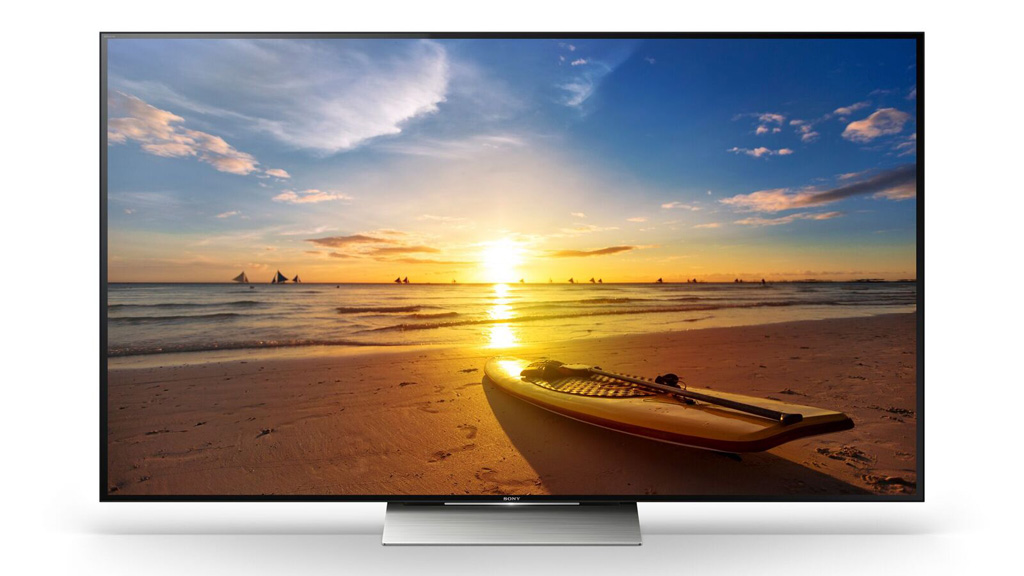Why you can trust TechRadar
Though processors in televisions are not often thought about when making the decision to purchase a new set, as we move into the 4K age, the ability to smoothly process high bit rates has become more important than ever.
A powerful processor makes all the difference when watching high resolution content, especially within apps like YouTube and from external USB drives. Thankfully, Sony's powerful 4K Processor X1 is more than up to the task.
When placed alongside the LG's superb EG960T 4K television, the X9300D effortlessly played back 4K HDR content from a connected USB stick, while the LG's OLED set occasionally stuttered under the pressure while playing back the exact same videos.
The X1 can also be thanked the X9300D's impressive upscaling performance, which provides noise-free images from regular Blu-rays and other 1080p content. We tested the recently released Blu-ray of Star Wars: The Force Awakens on the set and came away very pleased at the level of detail achieved from the 1080p source material. While this Blu-ray disc is obviously not HDR material, Sony's Triluminos 'quantum dot' display technology resulted in some sensational images nonetheless, with vibrant colours and high contrast levels, particularly during the film's climactic lightsaber battle. Though a filmic grain was present (and intended by the filmmakers), digital noise was practically non-existent.

Sony's self-titled Triluminos picture technology has enabled its high-end TVs to maintain an advantage over its TV rivals in colour terms for the last two or three TV generations, and the richness and stellar refinement of the X9300D's colour management not only continues this trend but arguably enhances it.
We also streamed a number of 4K shows on Netflix, including Marvel's Daredevil, Marco Polo, Narcos and Crouching Tiger, Hidden Dragon: The Sword of Destiny. Unfortunately, Though Netflix has now added HDR support for Marco Polo, it had not yet been added at the time of our hands-on session. That said, colours still looked fantastic on each show and film tested, particularly The Sword of Destiny, which opens with some breathtaking shots of lush green fields and only gets better from there. Colours, particularly red, green and blue, were deep and vivid, leading me to believe that Sony's Triluminos technology is the ace up its sleeve.
In terms of backlighting and contrast, the new Slim Backlight Drive design utilises two LED light modules, paired with dual light guides which split screen coverage 50/50. The technique allows the set to effectively switch off illumination to one half of the screen, while backlighting objects in the other, thereby maxing out contrast. Sony suggests its Slim Backlight Drive is comparable to a Full Array LED backlight, but without the bulk or cost.
Sign up for breaking news, reviews, opinion, top tech deals, and more.
While the set doesn't deliver the consistent blacks you'd expect from OLED, it at least does a good job of being largely benign. There's a slightly hazy consistency to the blacks, but this doesn't diminish the explosive vibrancy of images on screen.
As for the X9300D's sound capability, we were unable to test its speakers due to a multi-screen setup that had audio coming through an as-yet-unreleased soundbar. We will bring you updated details on sound quality when we publish our full review.

Admittedly, there are some elements of the X9300D's performance that frustrate. Sony's Motion Flow smoothing tech does not perform particularly well, often leaving a noticeable trail of ultraviolet ghosting behind objects moving quickly on screen. This was particularly observable during gaming sessions.
If you're a purist, you'll want to completely turn Motion Flow off as soon as you set the TV up, however, it's worth nothing that the option is tied to some of the X9300D's various picture settings, so if you do decide to try out Cinema mode and then switch back to Vivid, you'll need to go into the set's advanced settings and switch it off again.

Stephen primarily covers phones and entertainment for TechRadar's Australian team, and has written professionally across the categories of tech, film, television and gaming in both print and online for over a decade. He's obsessed with smartphones, televisions, consoles and gaming PCs, and has a deep-seated desire to consume all forms of media at the highest quality possible.
He's also likely to talk a person’s ear off at the mere mention of Android, cats, retro sneaker releases, travelling and physical media, such as vinyl and boutique Blu-ray releases. Right now, he's most excited about QD-OLED technology, The Batman and Hellblade 2: Senua's Saga.
